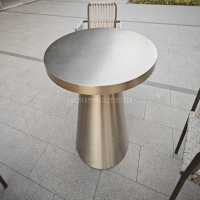Welcome to the website for landscape facilities products and knowledge.
How does the table’s design accommodate the needs of users with different cultural dining habits?
In our increasingly interconnected world, the dining table serves as more than just furniture—it becomes a stage where cultural traditions converge. Modern table designers have responded to this global reality by creating pieces that thoughtfully accommodate diverse dining practices from around the world.
Traditional Western dining typically involves chairs and elevated tables, while many Asian cultures prefer lower tables with floor seating. Contemporary designs now address this through adjustable height mechanisms and modular components that transform from standard dining height to low-level chabudai-style tables. These innovative solutions respect the physical requirements of different dining postures without compromising aesthetics.
The surface area and shape of tables have also evolved to meet cultural needs. While rectangular tables dominate European dining rooms, circular designs better serve communal eating styles prevalent in Chinese culture, where rotating centerpieces facilitate sharing multiple dishes. Some manufacturers now offer convertible tables that shift between rectangular and circular configurations, acknowledging that many households regularly practice both individual-plated and family-style dining.
Material selection reflects another dimension of cultural sensitivity. Designers increasingly incorporate temperature-resistant surfaces for cultures that serve hot pots directly on the table, while using naturally antimicrobial woods like teak for communities that practice hand-based eating. These material choices demonstrate how practical considerations intersect with cultural traditions in thoughtful furniture design.
The incorporation of integrated serving areas addresses another cross-cultural need. Mediterranean and Middle Eastern dining often involves numerous shared small plates, while Japanese kaiseki meals present multiple courses in precise arrangements. Tables with built-in shelving, cooling compartments, or removable serving trays accommodate these varied presentation styles without requiring additional furniture.
Perhaps most importantly, successful multicultural table designs maintain aesthetic coherence while serving functional diversity. The best pieces don't appear as compromised hybrids but as elegant solutions that honor multiple traditions simultaneously. This approach reflects our evolving understanding of domestic spaces as environments where cultural identities fluidly intersect and enrich one another.
As globalization continues to shape our living patterns, furniture that adapts to diverse cultural practices becomes increasingly valuable. These designs do more than simply function well—they acknowledge and celebrate the rich tapestry of human traditions that gather around something as universal as sharing a meal.
Related search:

Recommendation
Outdoor Metal Table - Classic Outdoor Furniture, Stainless Steel Table, Durable and Reliable